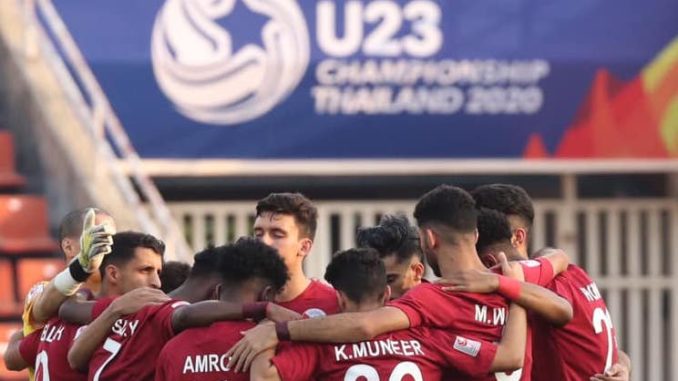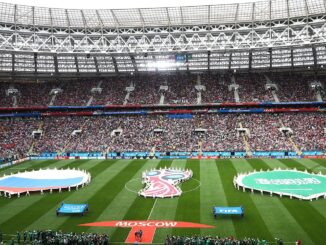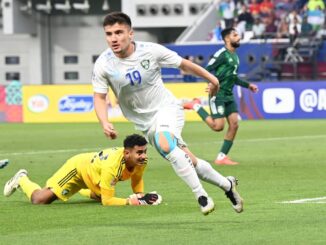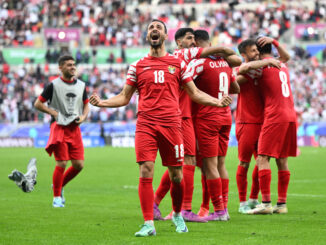
This month’s AFC U23 Championships has provided plenty of twists and turns already, pulling off some sizeable shocks; with the likes of Japan, Iran and a hotly-tipped Vietnam side all biting the dust before the knockout stage.
Yet one of the most surprising failures came in the demise of current Asian champions, Qatar.
A recent symbol of how best to create a winning formula at youth level, having made the latter stages of nearly every youth continental tournament over the last few years, Qatar meekly exited with three draws from three, edged out on progression by a little more than functional Syria team.
Failure to earn a single victory in Thailand will come as a severe jolt to the system to those involved, given this squad was billed as heavy contributors to the senior side that is set to debut at the World Cup come 2022.
It was only twelve months ago that Qatar threatened to break a new dawn in Asian football, in not merely winning their first continental title, but doing so playing positive, fluid attacking football with a squad entirely made up of players playing their trade in the local Qatar Stars League.
A young squad, developed over the last decade through the enviably-resourced Aspire Academy, under the tutelage of a boss given a wide scope for control across all ages in Felix Sanchez, Qatar were seen to have hit upon the holy grail of long-term conveyor belt success, which could only be foreseen to improve heading into a new decade.
The subsequent year, however, hasn’t exactly seen them grow from a position of relative strength. Cracks started to show in an admirable but creaking Copa America campaign over the summer, while the start of World Cup qualification in the autumn suggests little deviation from the tried and trusted Plan A that brought with it occasional frustration, if not always the consistency it desired.
In one regard, you’d be right to question – why should they change such a successful approach after only 12 months? If Qatar names their strongest eleven, they remain one of the best in Asia, and a worthy match for those waiting on the international stage.
However, reliance on such a select group of players, is optimistic at best and at worst naive. Qatar have been relatively fortunate with injuries over the last few years, yet form has started to be proven temporary, with little in reserve to breathe fresh air back into the squad.
The most telling conclusion from their trip to Brazil over the summer was the need to unearth further options in reserve. The squad were firing in their current guise, but while they were young in early 2019, they’d be pushing an average age of late 20s by 2022 if they didn’t seek rejuvenation.
Without the concern of qualifying for a tournament they’d already guaranteed participation in, World Cup qualification was the perfect opportunity to run the rule over the next generation of talent, in particular those young players that had just featured at the U20 World Cup in Poland.
While there has been sporadic success, winger Yusuf Abdurisag being one of the few outliers in this regard, any form of bulk transition hasn’t been forthcoming. Fast forward a few months to now, and a realisation that it’s not going to be as easy second time around will undoubtedly start to be dawning on the QFA.
Qatar’s AFC U23 Championships campaign couldn’t have been more distinct in its difference from the one that led the Maroon to the semi-final stage two years ago.
Far from being an attack focused, free flowing unit, the 2020 outfit felt functional and predictable; plenty of technically gifted players but lacking any real x-factor to turn a game.
Draws against arguably the best team in the tournament in Saudi Arabia, and a more than competent Japan, make for adequate assessment on paper, but while some may suggest VAR robbed them of all three points against Syria, in reality both goals they did record were gifted to them on a silver platter.
The talent was there; the movement of Hassan Palang in attack, the creativity of Hashim Ali, the influence of Abdullah Al-Ahrak; all of whom could only conjure brief notions of their true ability, thus opportunities at domestic and senior level remain difficult to harness their performance.
With a diminished set of options coming through, yet more pressure is being piled on those in possession of a senior jersey, the growingly familiar golden boys of Sanchez’s senior setup. With the pressure, and increased workloads has come injury and stuttering form.
Asian Cup MVP Almoez Ali is the best example of Qatar’s post-triumph hangover.
A pale comparison to the striker that broke records in the Emirates last year, the front runner has since been hampered by injury, increased competition for domestic minutes, forced repositioning and general rough form in front of goal.
The breakdown in his prospective move back to Austria this month looks to have hit yet another pause button on a career we all thought was on a vertical trajectory.
Other stars of the tournament have experienced similar struggles; Bassam Al-Rawi has hit injury knock back after knock back, Assim Madibo is finding minutes hard to come by at Al-Duhail, while even the star of the pack Akram Afif, who’s one of the few to take his form up to another level, winning the AFC Player of the Year in December, has hit his very own glass ceiling in yet another quiet transfer window as he, like Ali, pursues a move back to Europe.
The future for Qatar is a very uncertain one, not a picture we’d have envisaged painting only a year ago. While competitions are stacked ahead of them; Copa America in the summer, World Cup in two years’ time, the product being rolled out is becoming ever more stagnant and predictable.
The last two weeks’ efforts were supposed to showcase the breakthrough talent that would supplement a well rounded World Cup squad ready to put Gulf football on the map, with players ready to test themselves in the best leagues in Europe.
In the end, we’re neither in a position of this age group looking ready for continental success, while the seniors are struggling to find time domestically, let alone in the West.
Blink and you’ll miss them, that’s the real fear. Will the next year see a resurgent Qatar return, or will it prove many of their critics correct and become a mere flash in the pan consigned to the history books?
Photo: Qatar Football Association
Listen as we discuss Qatar’s performance at the 2019 Copa America on Episode 33 of The Asian Game podcast.




